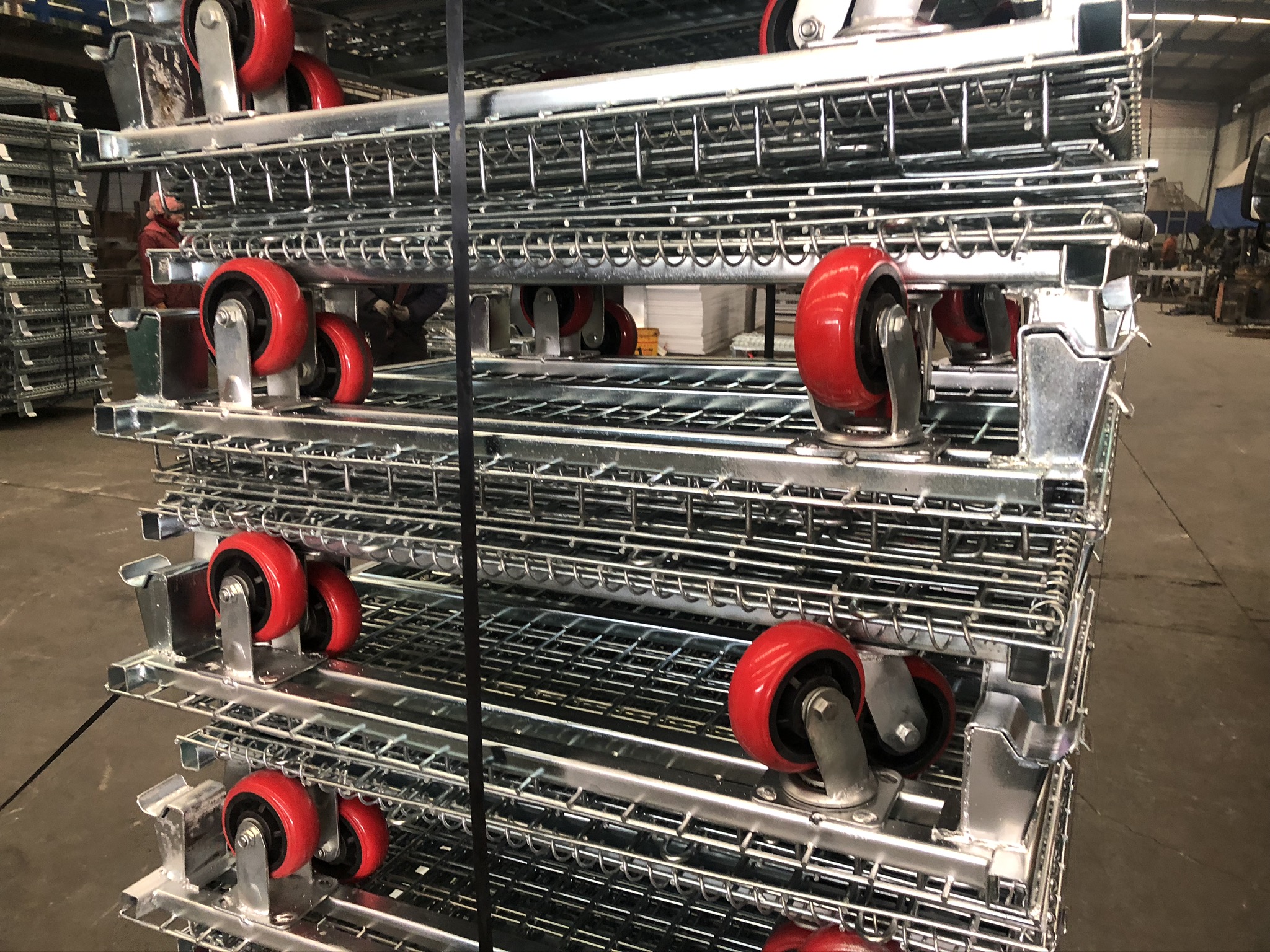Wire mesh containers, also known as wire mesh baskets, are storage and transportation containers made of steel wire mesh. They are designed to store and transport bulk materials in a safe and secure manner. The wire mesh construction allows for easy visibility of the contents, making it easy to identify the stored items. Here are some key features and applications of wire mesh containers:


Key Features:
-
Durable: Wire mesh containers are made of high-quality steel wire mesh, which makes them strong and durable. They are designed to withstand heavy use and can be used repeatedly for a long time.
-
Stackable: Wire mesh containers are designed to be stackable, which makes them space-efficient. They can be easily stacked on top of each other, which allows for efficient use of vertical space in a warehouse or storage facility.
-
Collapsible: Many wire mesh containers are collapsible, which means they can be easily folded down when not in use. This makes them easy to store and transport, as they take up less space when collapsed.
-
Versatile: Wire mesh containers can be used in a wide range of industries, including manufacturing, warehousing, and distribution. They are suitable for storing and transporting a variety of items, such as automotive parts, electronics, and hardware.

Applications:
-
Manufacturing: Wire mesh containers are commonly used in manufacturing plants to store and transport raw materials, work-in-progress, and finished products. They can be easily moved around the plant using forklifts or pallet jacks.
-
Warehousing: Wire mesh containers are ideal for use in warehouses, as they can be stacked and easily moved around using forklifts or pallet jacks. They are suitable for storing a variety of items, from small components to large machinery and equipment.
-
Distribution: Wire mesh containers are commonly used in distribution centers to store and transport products. They are sturdy and secure, which makes them ideal for transporting goods over long distances.
-
Retail: Wire mesh containers can be used in retail stores to store and display products. They are durable and can withstand heavy use, making them ideal for use in busy retail environments.
Overall, wire mesh containers are versatile and useful in a variety of industries, making them a popular choice for businesses that need to store, transport, and organize goods.
Specification of wire mesh containers can vary depending on the specific needs and requirements of the customer, but here are some common specifications
| Dimension (mm) | Wire Thickness (mm) | Mesh Size (mm) | Loading Capacity | Feet (mm) | Packing Weight (kg) | Packing Size (mm) |
|---|---|---|---|---|---|---|
| 800x600x640 | 4.8 | 50x50 | 600 | 100 | 22 | 800x600x250 |
| 800x600x640 | 5.3 | 50x50 | 600 | 100 | 25 | 800x600x250 |
| 800x600x640 | 5.6 | 50x50 | 700 | 100 | 28 | 800x600x250 |
| 800x600x640 | 5.8 | 50x50 | 800 | 100 | 29 | 800x600x250 |
| 1000x800x840 | 4.8 | 50x50 | 1000 | 100 | 32 | 1000x800x250 |
| 1000x800x840 | 5.3 | 50x50 | 1000 | 100 | 36.5 | 1000x800x250 |
| 1000x800x840 | 5.6 | 50x50 | 1000 | 100 | 43 | 1000x800x250 |
| 1000x800x840 | 5.8 | 50x50 | 1000 | 100 | 45 | 1000x800x250 |
| 1200x1000x890 | 5.6 | 50x100 | 1000 | 100 | 50.5 | 1200x1000x250 |
| 1200x1000x890 | 5.8 | 50x100 | 1200 | 100 | 53 | 1200x1000x250 |
| 1200x1000x890 | 5.6 | 50x50 | 1000 | 100 | 56 | 1200x1000x250 |
| 1200x1000x890 | 5.8 | 50x50 | 1500 | 100 | 60 | 1200x1000x250 |


The production process of wire mesh containers typically involves the following steps:
-
Raw Material chooseion: The first step is to choose high-quality steel materials, which are then inspected for quality and suitability for use in wire mesh container production.
-
Wire Drawing: The chooseed steel materials are then drawn into wire of the required diameter using wire-drawing machines. The wire is typically made of low-carbon steel, which has high tensile strength and is easy to weld.
-
Wire Welding: The wire is then welded into mesh panels of the required size and shape using a variety of welding techniques, including spot welding, resistance welding, and arc welding. The panels are typically made of galvanized steel to prevent rust and corrosion.
-
Frame Manufacturing: The mesh panels are then fitted into a steel frame, which provides additional strength and rigidity to the wire mesh container. The frame is typically made of angle iron, flat steel, or round steel, depending on the specific requirements of the container.
-
Surface Treatment: The wire mesh container is then surface treated using a variety of methods, including electroplating, hot-dip galvanizing, or powder coating. These methods help to prevent rust and corrosion, improve the appearance of the container, and extend its service life.
-
Assembly and Testing: The final step is to assemble the wire mesh container by fitting the mesh panels into the steel frame and attaching any necessary accessories, such as casters or lids. The container is then tested to ensure that it meets the required load capacity and other specifications.
Overall, the production process of wire mesh containers is highly automated and efficient, allowing for the production of large quantities of high-quality containers at a relatively low cost.

 Boss Metal And Plastic Co Limited
Boss Metal And Plastic Co Limited













